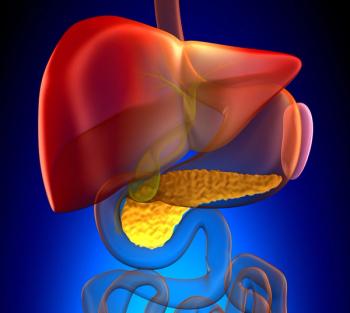
Bone Metastases in Gastrointestinal Stromal Tumors
The risk of bone metastases from GISTs, though rare, should be considered during long-term follow-up of patients, especially in those with liver metastases.
The risk of bone metastases from gastrointestinal stromal tumors (GISTs), though rare, should be considered during long-term follow-up of patients, especially in those with liver metastases, according to a recent study
Complete surgical resection is the standard of care for patients with GIST, and the tyrosine kinase inhibitors (TKIs) sunitinib and imatinib are used for patients with recurrence or metastases, or for those with unresectable tumors.
“Imatinib has revolutionized the treatment of advanced GISTs, enabling the long-term survival of patients,” wrote study authors led by Kayo Suzuki, of the department of orthopedic surgery at the University of Toyama in Toyama, Japan. “However, the optimal treatment for bone metastases originating from GIST is yet to be elucidated.”
The most common sites for metastases in patients with GISTs are the peritoneum and liver, according to background information in the article. Cases of bone metastases are rare, with only 12 reported cases in the literature. In 11 of the 12 cases reviewed (92%), patients also had liver metastases. The site of bone metastases most commonly reported was the spine (50%).
“Bone metastases should be completely surgically excised if possible,” wrote the authors. However, none of the spinal lesions from previous cases was resected. “This suggests that metastatic spinal lesions are typically unresectable due to the infiltration of surrounding nervous tissue.”
The first case described in the present study involved a 78-year-old man who presented 5 years after the resection of a GIST with a bone lesion of the femoral neck. The lesion was resected, and the patient was treated with imatinib at 300 mg daily. The patient remains alive at 4 years post-surgery.
The second case involved a 41-year-old man who twice presented with positron emission tomography (PET)/CT-detected bone metastases to the ribs, as well as liver and renal metastases. Following resection, the patient was treated with imatinib at 400 mg daily. The patient remains alive at 17 years from initial diagnosis.
“Although bone metastases originating from GISTs are rare, the likelihood of identifying metastases in unusual sites is increasing due to the prolonged survival of patients with the tumors and the introduction of imatinib therapy,” wrote the authors in their conclusion. “The risk of bone metastases from GISTs should be considered during long-term follow-up, particularly in the presence of liver metastases.”
Newsletter
Stay up to date on recent advances in the multidisciplinary approach to cancer.
































































































